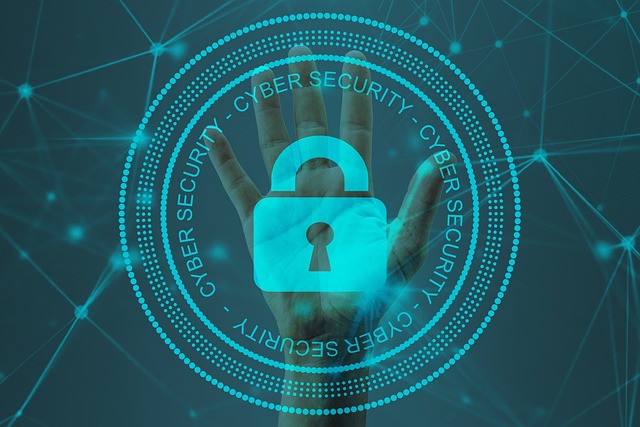Why Doesn’t Compliance Alone Safeguard My Organization?
The belief that Governance, Risk, and Compliance (GRC) practices alone are enough to safeguard against cyberattacks is a common misconception. GRC exists to help an organization develop a security framework that satisfies industry standards, internal guidelines, and regulations. It enhances organizations’ overall cybersecurity culture, promotes transparency, and facilitates accountability, but it cannot prevent the exploitation of weaknesses in an organization’s system. Even in perfectly compliant networks and systems, humans are often the weak link. It is important to note that even in today’s high-tech world, the standards that apply to compliance simply cannot keep up with the newest threats. As a result, cybersecurity risk management must consider much more than GRC; it must be a holistic approach that includes risk assessments, monitoring, security controls, and implementing cybersecurity training methods for employees.Benefits of Discussing Cybersecurity ROI with Employees
Cybersecurity has changed drastically since the internet became more widespread back in the late 1990s and early 2000s. In those days, cybersecurity rarely included more than a simple antivirus program installed on every computer on the network. In 2023, American organizations spent $10.6 billion collectively on cybersecurity efforts, which represents about 80% of all cybersecurity funding. Chief Information Security Officers (CISO) and board members agree that ROI on security investments is one of the most important factors for success. Furthermore, 93% of CISOs plan to increase their cybersecurity spending throughout 2024, according to the 2023 CISO Report from Splunk. There is a substantial financial return associated with simply discussing cybersecurity ROI with employees stemming from loss avoidance and better overall efficiency, and security improvements offer an even better return.Understanding and Developing Cybersecurity Culture in Your Organization
Cybersecurity culture is a term used to describe the way an organization perceives cybersecurity. It includes employees’ knowledge, beliefs, attitudes, and values, and it is designed to protect information and network assets that an organization accesses, stores, or transports. Implementing or changing that cybersecurity culture takes place in a five-step process:Step 1: Build from the Top Down
When executives and other leadership commit to making a change, it compels employees to follow suit. Making the choice to invest time and money into cybersecurity risk management is critical.Step 2: Train Your Employees
Employing a variety of cybersecurity training methods prepares organizations for a wide range of attacks. Employees should understand the most common threats, especially as they apply to phishing emails and social engineering. They should also understand proactive cybersecurity tactics they can use to keep data and networks safe.Step 3: Develop Procedures, Policies, and Guidelines
Local, state, and federal regulations are not enough to maintain cybersecurity culture. Organizations should develop succinct procedures and policies of their own, ensuring they are easy for employees to understand and follow.Step 4: Implement an Accountability Culture
Every employee has cybersecurity-related responsibilities, and it is important to encourage them to take accountability for their actions – good or bad – so that they can be addressed and avoided in the future.Step 5: Commit to Ongoing Improvement
Because threats and attacks evolve quickly, frequent cybersecurity risk management training is vital. This training includes revisiting and revamping cybersecurity culture to maintain its relevance and effectiveness.What Is Cybersecurity Risk Management Training for Employees?
As cyberattacks continue to become more sophisticated and widespread, organizations must make training a priority. More often than not, criminals exploit human nature via social engineering and use it to gain access to networks or data. A report published in Computer Weekly found that 17% of employees were tricked into actions that compromised their employers’ network security. Fortunately, there are things organizations can do to develop cyber-aware employees.What to Include in Employee Cybersecurity Training
Interactive cybersecurity training keeps employees engaged by encouraging them to actively participate in the sessions. Some of the most important topics organizations should cover include the following:- Types of Cyber Threats
- Passwords and Authentication Methods
- Information Security Basics
- The Role of Internet and Social Media in Cyberattacks
- Email Security
- Public Wi-Fi Networks
- Mobile Device Vulnerabilities and Protections
Cybersecurity Training Methods for Remote Employees
Using online cybersecurity training methods ensures that vital information reaches everyone, including remote employees who may be thousands of miles away from the office. Assuming a zero-trust policy and including practical advice for keeping home networks secure is critical. Requiring remote employees to change their passwords frequently and mandating regular refresher courses as new threats evolve provides organizations with the best protection possible.Choose an Experienced Cybersecurity Training Company in NYC
Cybersecurity risk management is essential for identifying, managing,and monitoring risks to your organization’s data. Engaging employees in several cybersecurity training methods relevant to your network and industry ensures the best possible defense against cyberattacks. Tech Alliance takes your network seriously. Learn more about our Cyber Security services – including cybersecurity training for employees. In the meantime, contact us for a free network assessment.Get a Free Network Assessment
Wondering just how secure your IT infrastructure and data is? We’ll give you a “30,000 foot view” to help you understand where your system has been threatened and talk to you about steps you can take for better protection.
To get started, we’ll need a few things from you, so reach out to us for a free consultation.
"*" indicates required fields
Sources:
- Sage Journals, “Encouraging Employee Engagement with Cybersecurity: How to Tackle Cyber Fatigue”
- Forbes, “How Cybersecurity Training Lowers Risk Among Employees
- LinkedIn, “Debunking the Myth of GRC in Cybersecurity: Why Compliance Alone Isn’t Enough”
- Government Technology, Through the Years: A Broad Look at Two Decades in Cybersecurity
- Return on Security, “A Year of Disruption and Resilience: The Cybersecurity Market in 2023”
- Splunk, The CISO Report
- ISACA, Implementing a Cybersecurity Culture
- Institute of Data, The Importance of Cybersecurity Awareness Training for Employees
- Computer Weekly, “More Than One in 10 Employees Fall for Social Engineering Hacks”

Todd Stevens is a recognized Network Architect and founder of Tech Alliance. Todd holds degrees in Computer and Information Sciences, as well as many recognized technology industry certifications. Over the course of his career Todd has led numerous high-profile technology teams in the NYC area. Including: Rudin Management, Taj Hotels, Grove Press, NBC Universal, The Art Students League of NY, The Osborne Association and The Rockefeller organization.
